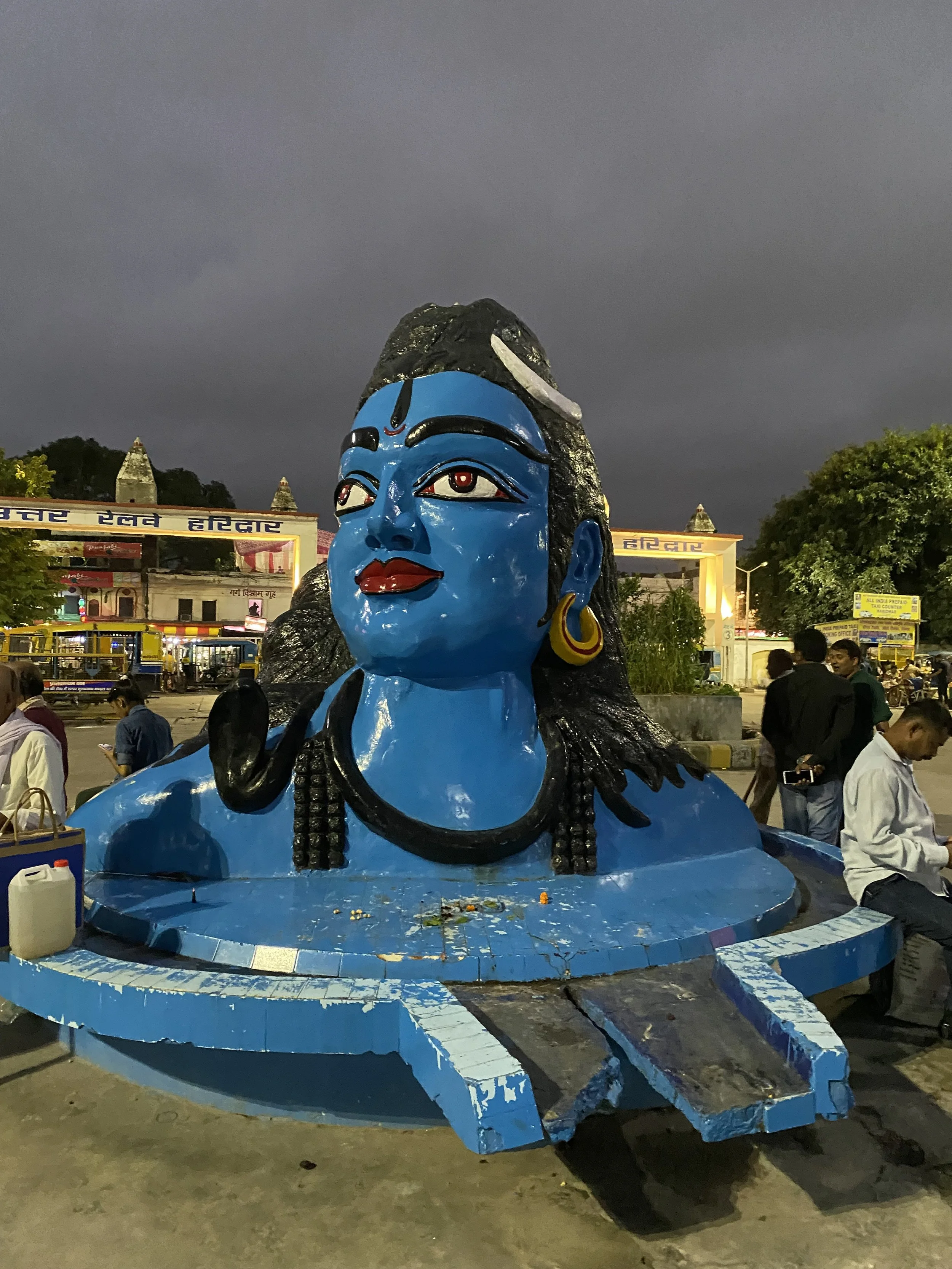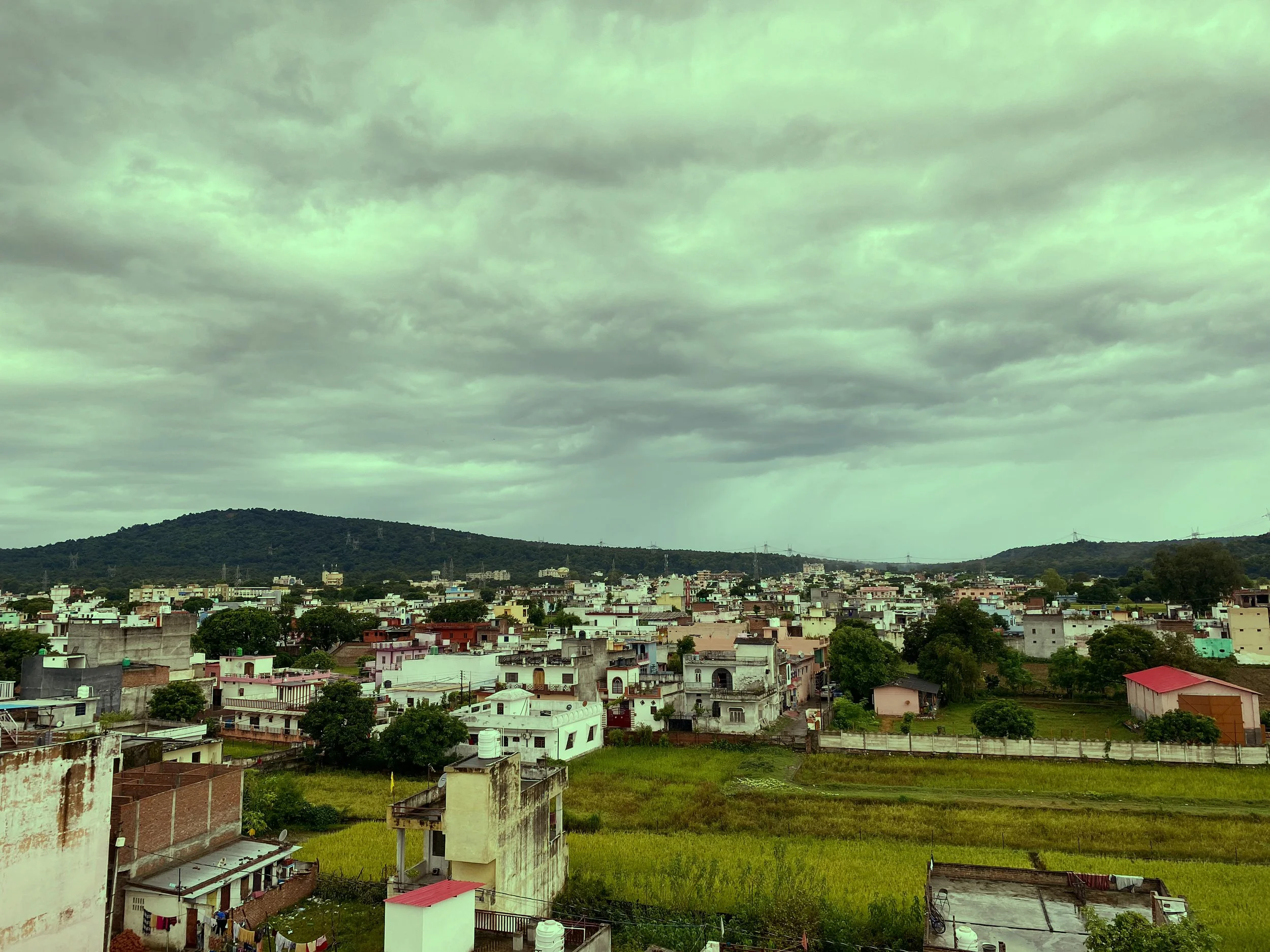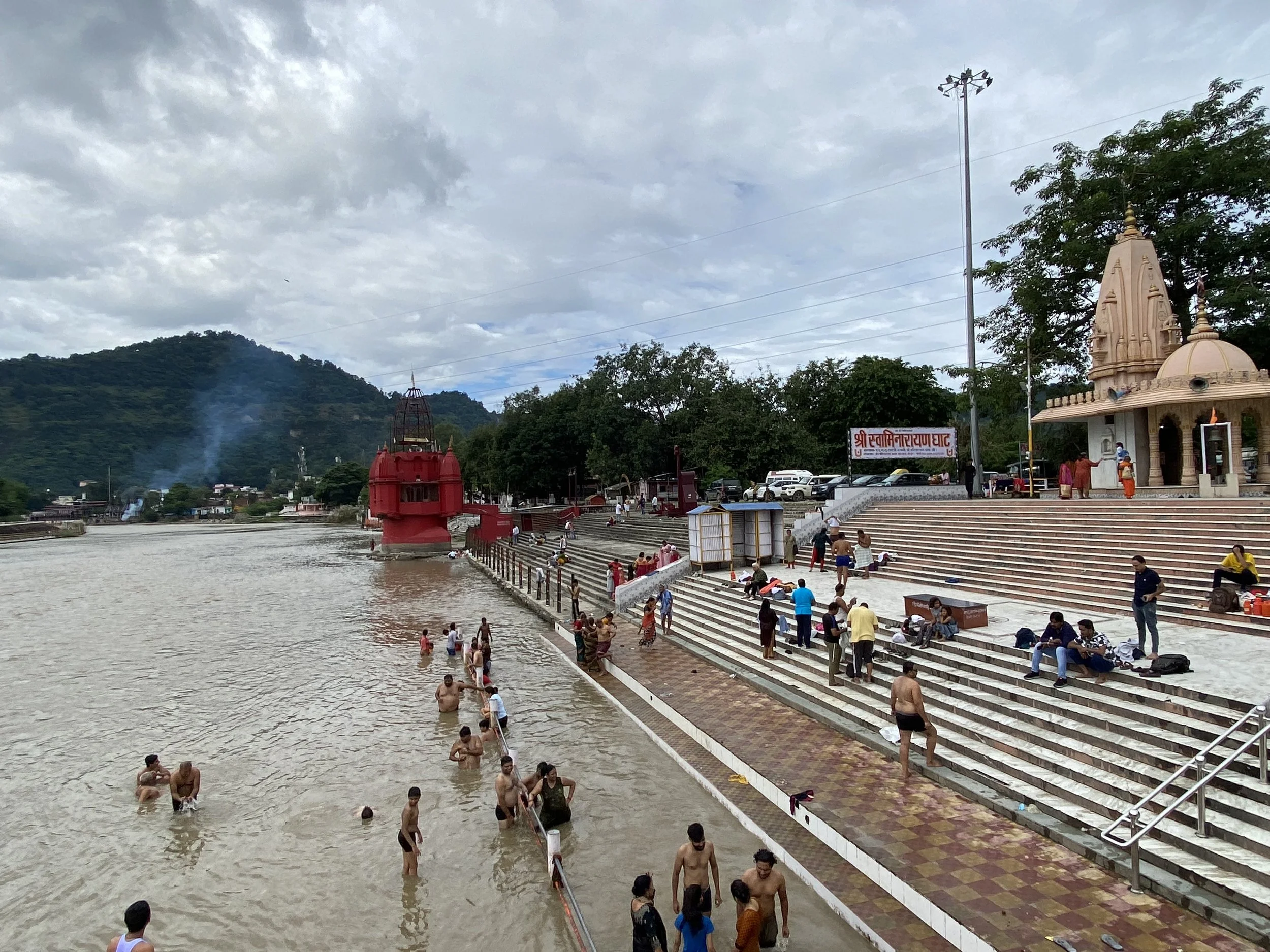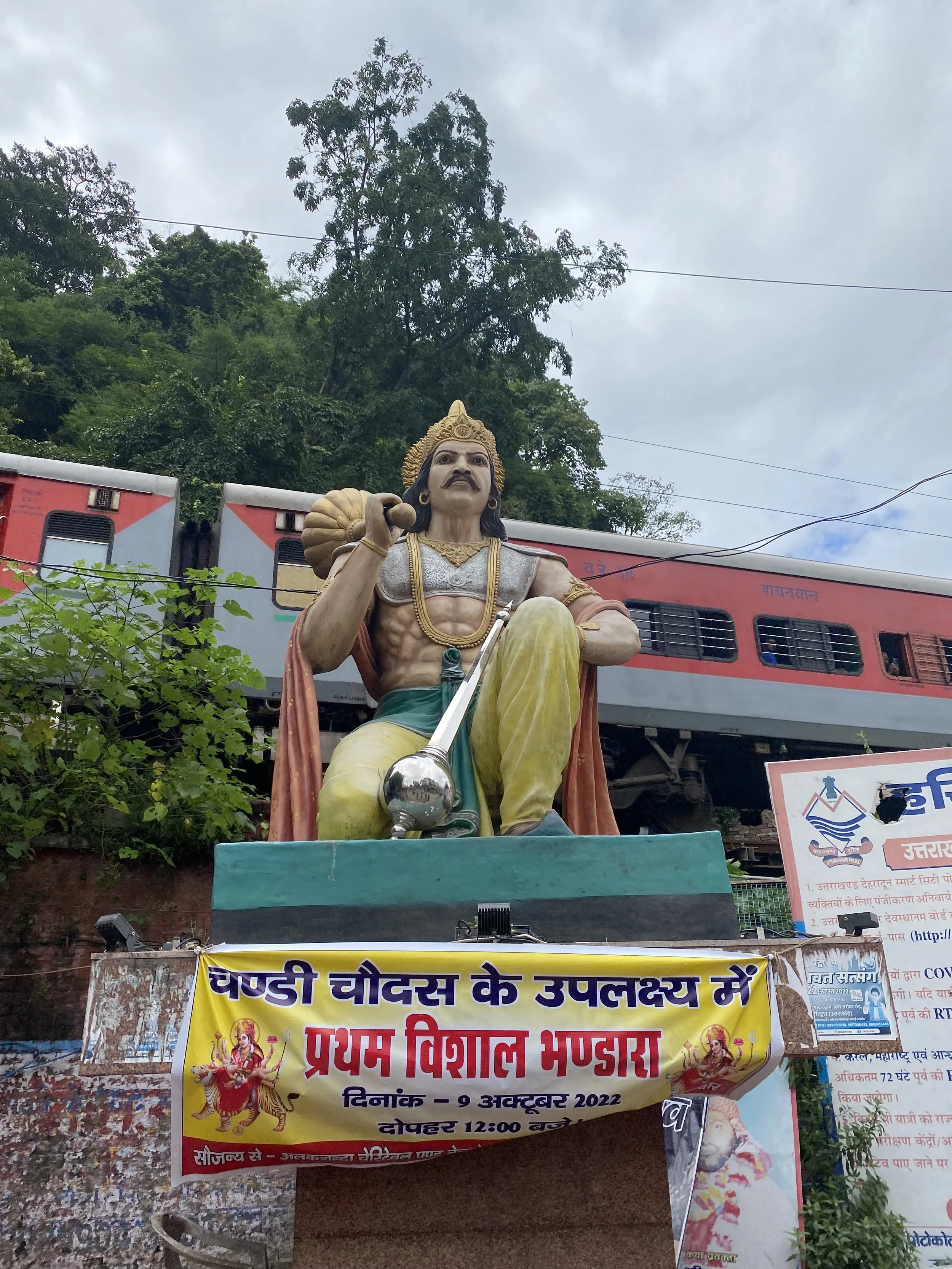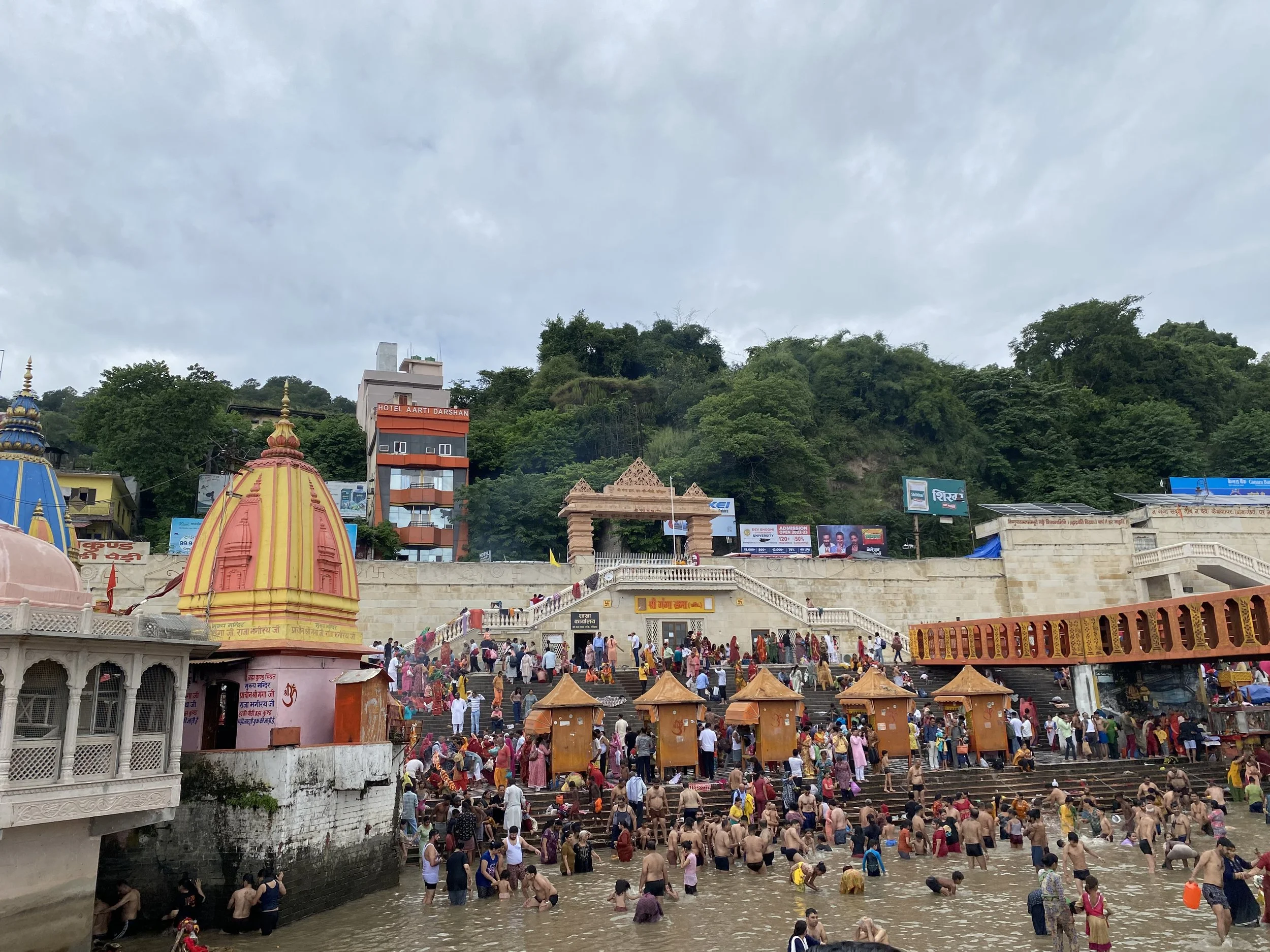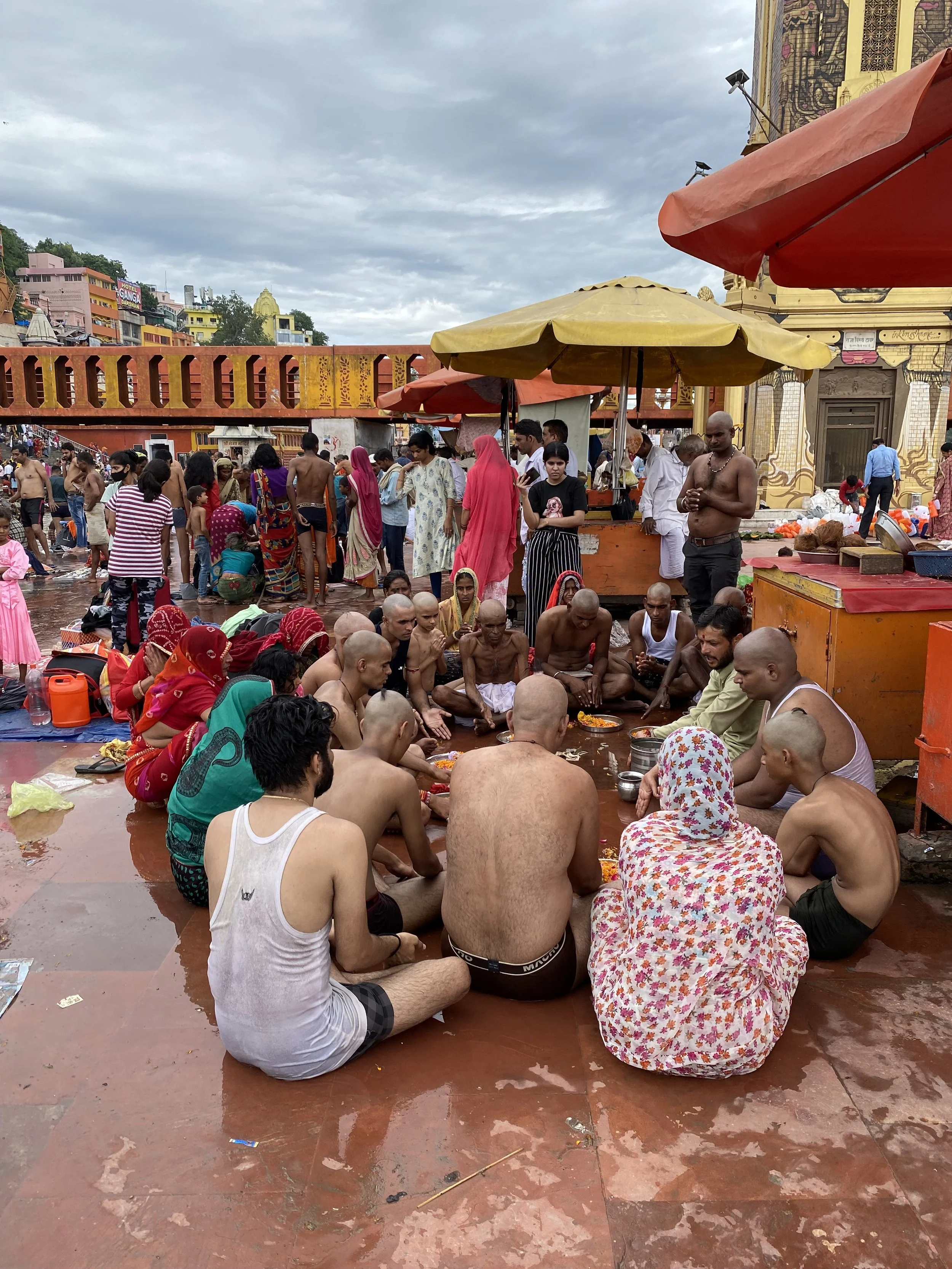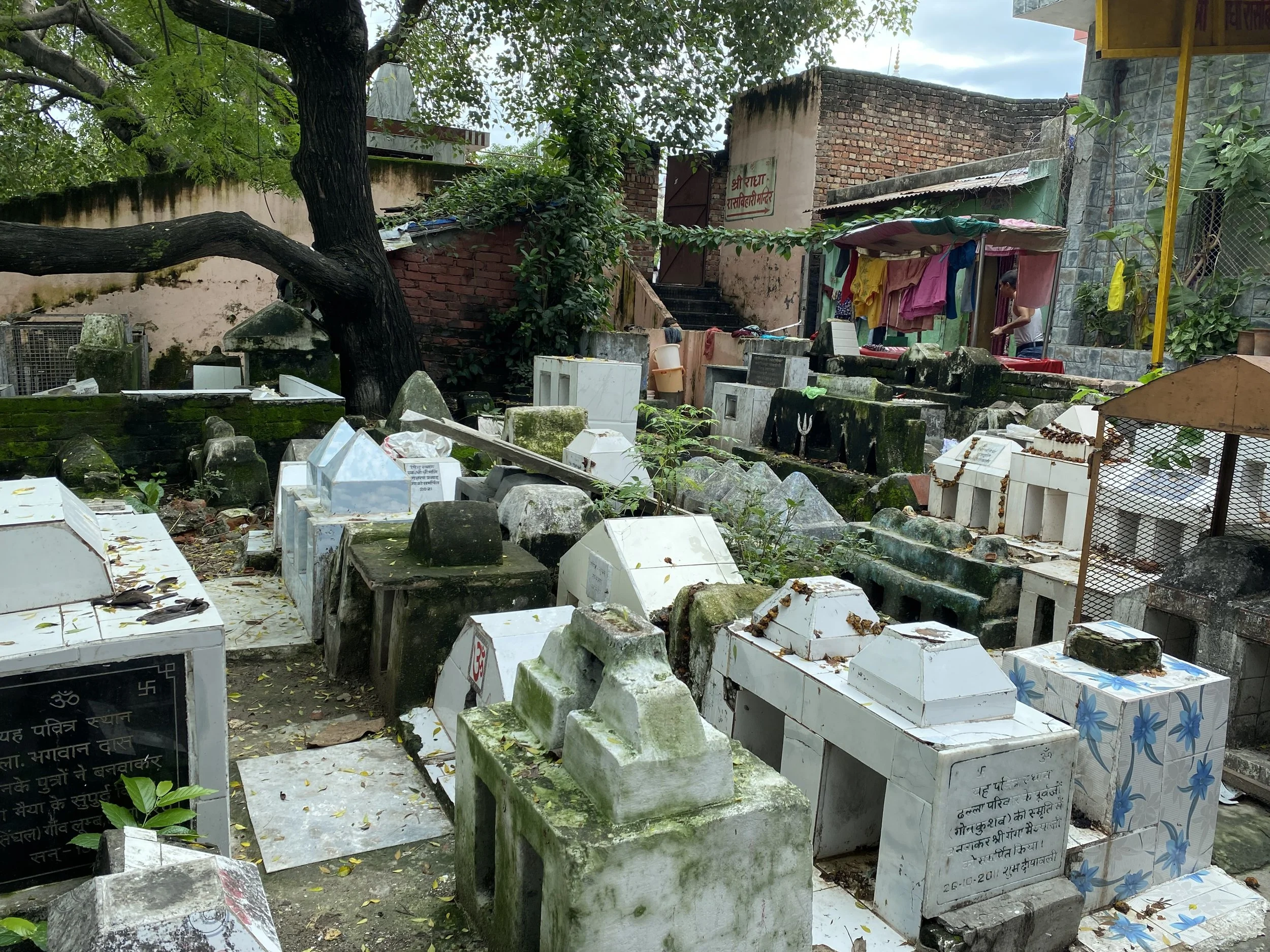On The Gateways of Faith: Divinity and the Damned in Haridwar
Photo: Karan Madhok
Photo Gallery: A year after another Kumbh Mela, Karan Madhok visits Haridwar to explore a city deeply immersed in the juxtaposition of religion and commerce.
Most students of Indian mythology will know the story of ‘The Great Churning’, Samudra Manthana. After great celestial battles between the Devas and Asuras (Gods and Antigods), an understanding was reached: it was decided that both sides would join forces to churn the Kshira Sagara, the ‘ocean of milk’ of Hindu cosmology. Its purpose was to yield the super-drink of amrita, the great elixir of immortality. This Churning would become one of the most consequential events in ancient mythology.
The god of medicine—Dhanvantari—appeared with a kumbha (vessel, or womb) carrying the amrita, and the temporarily-reconciled Devas and Asuras turned foes again, setting off into another mighty battle. The Devas turned to the eagle-like divine bird Garuda to fly away with the nectar of immortality. As Garuda set off with the kumbha, some say that four drops of the amrita spilled down to Earth at four different places: Haridwar, Prayagraj, Trimbak and Ujjain. Some say that the gods chose to temporarily hide the kumbha here.
The four spots hence became the four destinations of the Kumbh Mela, originating the belief that a bath by the river here will grant immortality beyond the Hindu cycle of rebirths—that is, immortality beyond the painful curse of mortal life. The Kumbh is a major Hindu festival, held every twelve years at these four holy towns by river banks across India: Prayagraj (Allahabad), Nashik, Ujjain, and Haridwar. Pilgrims believe that the sins of all those who bathe in the rivers here are cleansed, providing a means to prayascitta (atonement) for past mistakes.
Photo: Karan Madhok
The exact date of the Kumbh is determined by astrological movements; it was the same astrological rationale that actually preponed the Kumbh by a whole year—to 2021 instead of 2022—when ‘Jupiter moved to Aquarius and the Sun entered Aries’. Held in Haridwar (Uttarakhand) in the middle of the deadly second wave of the pandemic last year (as a precursor to the legislative assembly elections in Uttarakhand and Uttar Pradesh), the most recent Kumbh Mela was inundated by over nine million visitors. It turned out to be a major super-spreader event. Two weeks into the fair, more than 2,000 attendees had already tested positive for COVID-19 Many returned home carrying the virus, and soon, the spread accelerated around the country. It was when India’s healthcare infrastructure suffered a catastrophic collapse that the Prime Minister finally pleaded attendees to mark the rest of the Mela as only a ‘symbolic’ event. The congregation ended soon after.
Haridwar, in its name, literally means the ‘Gateway to the Gods’. Situated on the banks of the Ganga River and by the foothills of the Shivalik mountain range, it is considered to be one of the holiest cities in India for specifically for bhakts of Shiva, for those yearning for a supposed-cleansing dip in the river, or for those who wish to perform the final cremation rites for the dead.
It is a major pilgrimage destination year-round, but the 12-yearly Mela is of course a major highlight, beloved by locals in Haridwar for its immense economic potential. Hotels and dharmshalas during this period are packed to the brim. Visitors drudge along for hours among the dense populace, with barely space to take steps forward, as they slowly walk towards the Ganga.
Photo: Karan Madhok
The site where the amrita fell in Haridwar is called Brahma Kund, by the popular Har-Ki-Pauri (‘footsteps of the Lord’) ghat. It is perhaps the most sacred place in the city. Even over a year after the Kumbh Mela, this ghat is in a near-constant state of mania, a crowded festival of devotees changing, bathing. Crowds walking past the wet stone slabs near the river, or across the muddy banks of the water, or through the garbage and prayer flowers that have been casually strewn away. There are hawkers selling balloons, snack carts offering gol-gappas and chhola-puri, elder Brahmins holding the audience of their young devotees, beggars asking for alms, and many naked bodies, unashamed of their warts and scars, all here for some experience of the divine.
In a recent visit to Haridwar, I set to capture the moments and landscapes that provide a brief snapshot of this town’s deep entanglement with spirituality.
Photo: Karan Madhok
Photo: Karan Madhok
Photo: Karan Madhok
Photo: Karan Madhok
Photo: Karan Madhok
Photo: Karan Madhok
***
Karan Madhok is a writer, journalist, and editor of The Chakkar. His debut novel A Beautiful Decay (Aleph Book Company) was published in October 2022. His creative work has appeared in Epiphany, Gargoyle, The Literary Review, The Bombay Review, The Lantern Review, and the anthology A Case of Indian Marvels. He is the founder of the Indian basketball blog Hoopistani and has contributed to NBA India, SLAM Magazine, Fifty Two, FirstPost, and more. You can find him on Twitter: @karanmadhok1 and Instagram: @karanmadhok.


